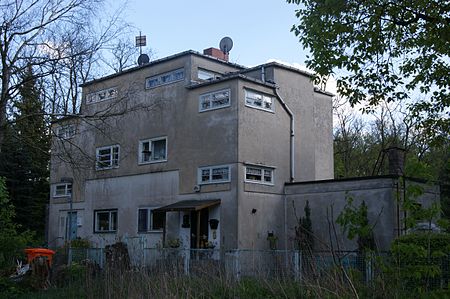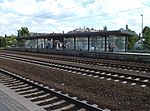Neu-Jerusalem
Buildings and structures in BerlinModernist architectureSpandauZones of Berlin

The Siedlung Neu-Jerusalem (New Jerusalem settlement) is a residential complex along federal route No. 5, here named Heerstraße, in the locality of Staaken, part of Berlin's Borough of Spandau. The Deutsche Gartenstadt Gesellschaft commissioned Erwin Gutkind (in German), who designed between 1923 and 1924 following the style of New Objectivity the plans for the complex, which was completed until 1925.
Excerpt from the Wikipedia article Neu-Jerusalem (License: CC BY-SA 3.0, Authors, Images).Neu-Jerusalem
Heerstraße, Berlin Staaken
Geographical coordinates (GPS) Address Nearby Places Show on map
Geographical coordinates (GPS)
| Latitude | Longitude |
|---|---|
| N 52.528 ° | E 13.126027777778 ° |
Address
Heerstraße 654
13591 Berlin, Staaken
Germany
Open on Google Maps







